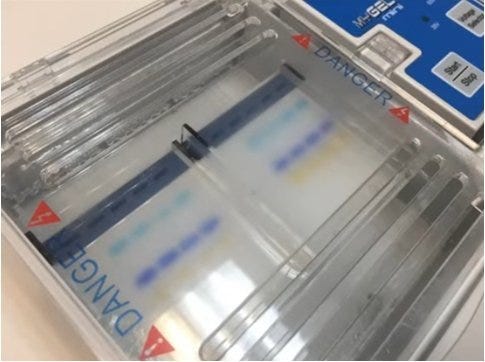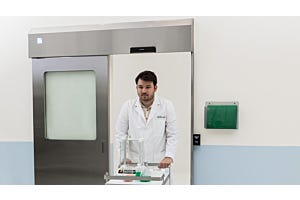- Get a QuickQuote
- Free Consultation (714) 578-6016
- Track Order Sorry, no orders are open for tracking
Monthly Archives: January 2017
-
Posted: January 05, 2017Read more »
Electrophoresis is a common lab procedure for identifying and separating macromolecules. It was first observed in the early 1800s by a university scientist in Moscow. Like many discoveries, it was accidental, but has proven itself useful for many research scenarios. By applying electricity, technicians use the particles’ negative or positive charges to make them migrate through porous matrix, such as an agarose gel. When positively charged molecules are present in a sample, they will creep towards the negative current (cathode), while negatively charged molecules will migrate to the positive current (anode).
Besides a source of electricity and gel, this kinetic test requires buffer to help prevent temperature and pH extremes. The type of gel used depends on the sample and application. Gels are “solid,” but porous. Within the gel, larger molecules will travel more slowly and smaller molecules will move quickly. Therefore, molecular size is another way that
- All Terra Blog Posts 156
- Glove Boxes 7
- All Laboratory-Equipment Blogs 57
- Air Showers 2
- Iso Compliance 4
- Raw Materials 4
- Garments & Gowning 2
- Cleanroom Vacuums 0
- Feature Comparisons 32
- Wet Processing Stations 1
- Biological Safety Cabinets 1
- Fan Filter Units (FFUs) 6
- Fume Hoods 3
- Cleanroom Furniture 1
- Doors & Windows 2
- Vacuum Chambers 2
- Testing & Analysis 14
- Storage Systems & Processes 8
- Sample Prep & Processing 32
- Cleaning, Decontamination, Sterilization 8
- Cleanrooms 32
- Pass-Through Chambers 14
- Laminar Flow Hoods 4
- General Topic 7
- Furnishings & Equipment 17
- Desiccators 13







